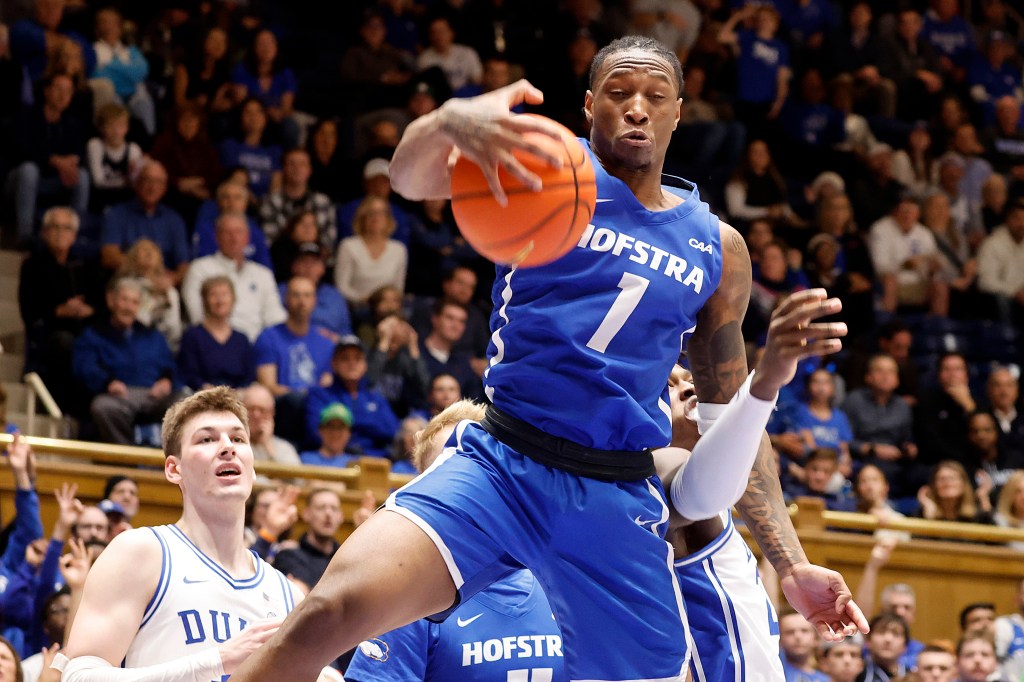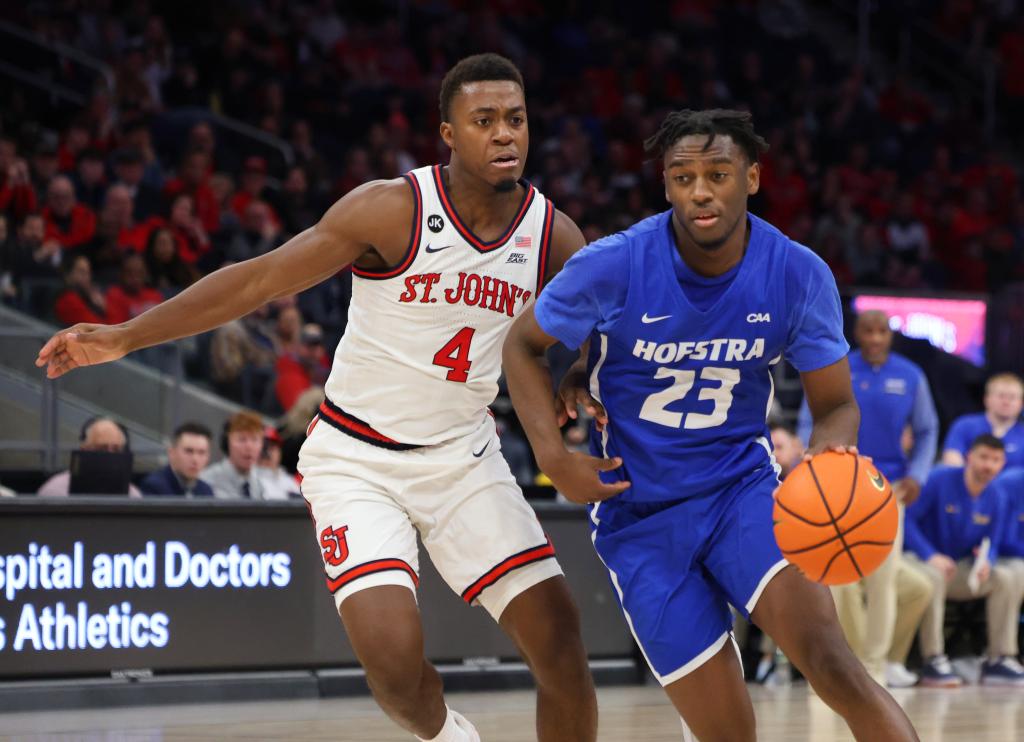It’s not just the rich who get richer. Sure, the transfer portal helps power conference schools the most, acting as a feeder system every spring.
But, as Hofstra has shown, it can work for lower-level schools, too.
With a win in the opening round of the CAA Tournament on Sunday, the third-seeded Pride will have put together three consecutive 20-win seasons for the third time in program history. And it has happened on the strength of transfers.
Aaron Estrada led Hofstra to the CAA regular season crown last year as the league’s Player of the Year for the second straight season. Then in the spring, he left for Alabama.
Teammate Tyler Thomas replaced him, going from Estrada’s Robin to Hofstra’s Batman. Thursday, he was named the CAA Player of the Year. Darlinstone Dubar, another transfer like Thomas, was a second-team selection.
“The proof is in the pudding. We’ve done it, we’ve developed guys at a high rate, and I guess put them in position to make some really good money and be successful,” coach and former Hofstra star Speedy Claxton told The Post in a phone interview this week. “So, the blueprint is there, you just got to come in, follow it and work hard.”
All three players have one thing in common: development.
Before coming to Hofstra, Estrada rarely played for Oregon, though he was the MAAC Rookie of the Year as a freshman at Saint Peter’s.
Dubar had a similar experience at Iowa State before improving each of the past three seasons with the Pride.
Thomas has enjoyed a similar progression since leaving Sacred Heart two years ago, and this season he leads the nation in 3-point field goals made per game (3.7) and is third in the country in scoring (22.3).
“Aaron Estrada coming here allowed everything to happen for us,” said assistant coach Mike DePaoli, the lead recruiter for Estrada and Thomas. “It was a huge attraction for Tyler Thomas to come play with Estrada.”
When last season ended with a loss in the second round of the NIT to Cincinnati, it was clear Estrada wasn’t going to return.
The key was keeping the 6-foot-3 Thomas, who could’ve made big money at the high-major level.
Hofstra (19-12) has a Name, Image and Likeness (NIL) collective, Turnpike United, but it can’t compete with the kind of money that is thrown around by the power conferences.
Right after the loss in the NIT, Claxton and his staff met with Thomas and explained the plan for him. He would be in Estrada’s role, and they would build around him. Thomas never really considered moving on.
“I already left the one school, and I value connections and these guys did right by me,” he said. “It’s more of a trust thing. I trust them to get me to where I want to go. They did all of the stuff they said.”
“[NIL] wasn’t what I valued. It was about connection, team, trust and ultimately getting better.”
Claxton believes Hofstra was “lucky” Thomas thought about his future before an immediate payday. But that wouldn’t be fair to Claxton and his coaching staff. They have proven to be able to elevate the play of transfers. Estrada, Thomas and Dubar are three prime examples.
Once this year ends, Dubar will be an interesting case to follow.
He credited how hard Hofstra coaches have pushed him since arriving at the Long Island school, while Claxton said Dubar has begun to seek them out to get extra work in on his own, a vital part of his progression. A 6-foot-8 wing averaging 18.1 points, 6.7 rebounds and shooting 39.9 percent from deep, he will have his suitors.
But Hofstra can point out how well staying that extra year worked for Thomas. It will be his team next winter.
“There’s a blueprint here, and once they show you the blueprint and show you the proof, that we win at this program and you will get dramatically better at this program, it’s kind of hard to say no to such a basketball-focused [plan],” Thomas said. “They just know how to get guys better.”
Of course, not all players will think big picture quite like Thomas. Hofstra will lose players as it did with Estrada. It’s the way of college basketball now. Mid- and low-major schools are almost a development system to the top programs. Claxton has accepted it.
“You just got to roll with the punches, and if you’re fortunate and lucky enough to keep a kid, then hats off to you,” he said. “But more than likely, you’re probably not going to be able to with the money that’s going to be thrown at them.”
He added: “It sucks, honestly.”
For now, though, the future is not a concern.
Claxton makes a point of focusing on the present, and not even discussing anything past the current season.
After all, Hofstra hasn’t played in the NCAA Tournament since 2001.
It won the CAA Tournament in 2020, but COVID-19 wiped away March Madness.
“I just sent a text, ‘Let’s bring back a championship home,’ in our group chat,” Thomas said. “Everyone is on board, and that’s what we’re trying to do.”





